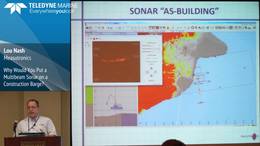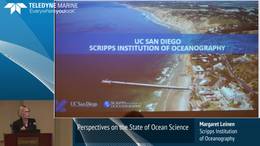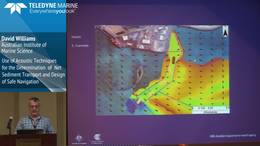USV (Unmanned Surface Vehicle) RSV Sea Observer deploying the Seabotix ROV vLBV300 to increase safety.
For some years now, autonomous vehicles achieve more and more hydrographic survey operations. Their fields of action are becoming more extended and they allow reducing the costs of this type of intervention in comparison with conventional survey means.
If typical marine survey can be now well achieved thanks to USV, from inshore and coastal areas to open oceans and offshore bathymetry, the autonomous and remote monitoring of sensitive submarine works and subsea observation, in particular in congested areas and hazardous environment, are challenging.
More and more marine works companies faces to this issue, including in the offshore oil and gas sector, such as NPCC in UAE (National Petroleum Construction Company).
This is to answer this gap, that Marine Tech, a French-based company, developed the RSV Sea Observer, equipped with Teledyne Seabotix ROV vLBV300: the first USV deploying ROV (Remote Operated Vehicle) for coastal and offshore missions.
This project led up to the development of motorized winch integrated onboard the USV deploying the ROV vLBV300 up to 100m water depth and umbilical tensioning system providing a perfect winding. Coupled with an articulated platform at the back of the USV, the ROV is launched and recovered easily and safely and protected during transit.
The communication between ROV and RSV was part of the development, as well as the autopiloting with Dynamic Positioning of the USV, with relative acoustic positioning (USBL) ensuring ROV tracking.
This new generation of USV has capabilities for both coastal offshore survey autonomously, thanks to sonars (multibeam echosounders and side scan sonars), and also for subsea visual monitoring and inspection thanks to the ROV.
Presenter:
Thierry Carlin
Thierry Carlin
Marine Tech Sas






